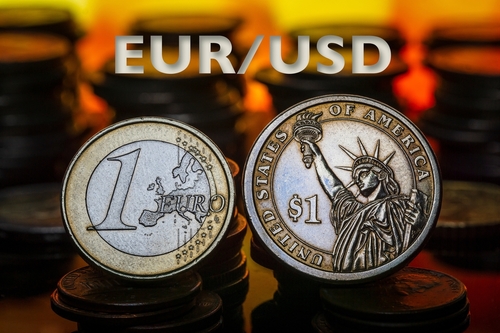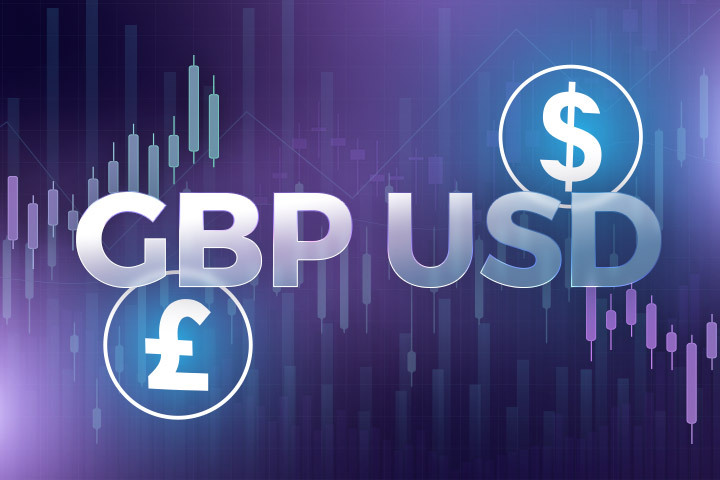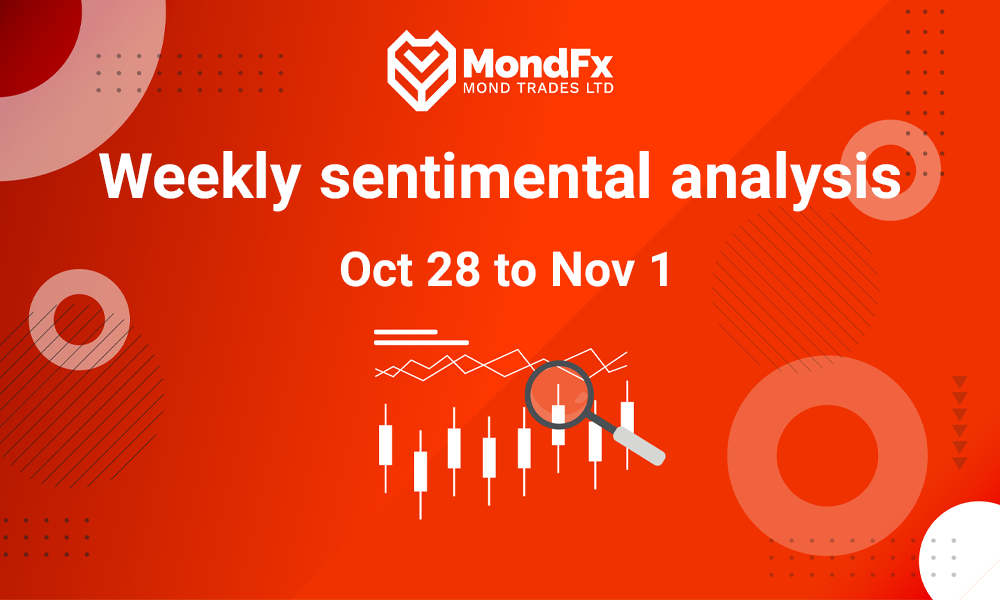
The Gold
On Tuesday, gold reached around $2,760 per ounce with a strong upward trend; however, after hitting this level, it saw a $50 decline. One of the main reasons for the price reversal was the FTR reversal pattern formed on the weekly timeframe based on technical analysis. Therefore, it can be expected that the downward trend may continue in larger timeframes. However, this is not the only reason for the recent peak of 2024 for gold.
In the past week, data such as new home sales and the Flash Services Index were released, which were beneficial for the dollar index, strengthening the currency. Additionally, the upcoming elections in the U.S. have further bolstered the dollar.
On Wednesday, gold hit its highest record at $2,758.37, driven by safe-haven demand due to geopolitical tensions, particularly related to Israel and Iran.
However, with the opening of the Tokyo market on Monday, gold prices fell below $2,730 per ounce. This decline was due to a decrease in the attractiveness of safe-haven assets following Israel’s attacks on Iran over the weekend. The attacks were more limited than expected, not targeting oil and nuclear facilities, and Tehran did not immediately respond.
Markets are now focusing on key U.S. data to understand the outlook for Federal Reserve interest rates, including PCE inflation, preliminary estimates for third-quarter GDP, and employment data. Recent strong economic data has reduced expectations for aggressive rate cuts. Lower interest rates decrease the opportunity cost of holding non-yielding assets like gold. However, uncertainties related to the U.S. elections and major central bank easing continue to support gold.
For this week, the most significant data will be the NFP (Non-Farm Payroll) or employment figures in the non-agricultural sector. In the last release of this data, we saw a strengthening of the dollar. Forecasts for this data indicate a figure of 111,000. If these predictions materialize, there is a possibility of further declines in gold prices. From a technical perspective, there are still lower levels accessible; the ranges of $2,700 and $2,650 can be considered strong support levels.

The Euro
On Thursday morning, S&P Global released its preliminary purchasing managers’ index (PMI) for Germany, France, and the Eurozone for October. Growth in both the manufacturing and services sectors led to an increase in Germany’s composite PMI from 47.5 in September to 48.4 in October. In France, however, there was a noticeable deepening of the recession due to a significant decline in demand in both manufacturing and services, resulting in a drop in the composite PMI from 48.6 to 47.3.
Additionally, the Eurozone’s composite PMI rose from 49.6 the previous month to 49.7 in October, hovering just below the 50 mark, which separates growth from contraction. Overall, the Eurozone PMI survey for October indicates a risk of declining gross domestic product (GDP) in the final quarter of the year. Given the progress in the decline of inflation, a slowdown in economic activity could accelerate the European Central Bank’s (ECB) movement towards lower interest rates.
Bloomberg reported that so far, ECB officials have successfully steered the Eurozone economy towards a 2% inflation target. However, as this goal approaches, disagreements have emerged regarding the timing and manner of rate reductions and inflation management.
On the other hand, Pierre Wunsch, an ECB policymaker, stated that it is too early to discuss the December policy decision. He emphasized that there is no need for further acceleration in expansionary monetary policies and that a temporary and small deviation from the inflation target due to energy price fluctuations is acceptable.

The Pound
S&P Global announced that the UK purchasing managers’ index (PMI) fell from 52.6 in September to 51.7 in October. Although this figure is below the 52.5 expected by economists, it remains above the 50 threshold that distinguishes growth from contraction. According to S&P, warnings from the new Labour government about the unfavorable conditions inherited from the Conservative government have diminished consumer confidence and reduced business costs.
The release of the UK PMI on Thursday indicated weaker activity in both the manufacturing and services sectors in October. The services PMI dropped to 51.8, down from 52.4 in September, reaching its lowest level in four months. Business confidence continues to decline as the economy remains weak, with concerns that the government may introduce austerity measures in next week’s autumn budget. Employment in the services sector has significantly decreased due to concerns about the economic outlook.
The manufacturing sector showed slight growth, with its PMI at 50.3, down from 51.5 in September, marking a decline for the second consecutive month. New orders have decreased as global demand remains weak, and business sentiment has fallen to its lowest level in two years due to political uncertainties in the UK and beyond.
Despite the weak PMI data, the pound managed to post a gain on Thursday. However, it appears to be heading for its fourth consecutive week of declines, having dropped 2.9% in October while the U.S. dollar has strengthened against major currencies.
The Bank of England has effectively controlled inflation through interest rate hikes, with markets anticipating rate cuts in a new era of lower inflation. The Bank of England reduced rates by a quarter percentage point in June but has remained passive in the last two meetings. Governor Bailey stated earlier this week that inflation has decreased faster than expected, but cautioned that inflation remains “unbalanced” due to services inflation exceeding the 2% target.
On Friday, the British pound reached the target resistance level of 1.2994 before pulling back slightly. Price activity near the lower boundary of the price channel puts significant pressure on it. The ideal range for anticipating U.S. election results is between 1.3080 and 1.3141, aligning with the 38.2% Fibonacci retracement level.

The Oil
Crude oil prices for West Texas Intermediate ended the fourth week of October with a 4.5% increase, closing around $72.10. On Friday, December futures for crude oil rose by $1.59, or 2.27%, while gasoline prices also saw a similar increase of 2.25%, reaching their highest weekly level. The escalation of tensions in the Middle East and the release of stronger-than-expected economic news on Friday were key factors behind this price rise.
The market is still assessing and anticipating potential changes in OPEC+ production levels for December, with the upcoming U.S. elections—less than two weeks away—affecting market volatility. Additionally, the reduction of crude oil inventories in tankers is another factor supporting prices. According to Bloomberg data, China’s oil demand decreased by 6.98% in September compared to the previous year, reaching 14.176 million barrels per day. This drop in demand from China is a downward influence on prices.
Other negative factors for oil prices include the increase in crude oil production from Libya, which has returned to normal levels following the resolution of internal political conflicts. This resumption of supply has alleviated concerns about potential disruptions from Middle Eastern conflicts. OPEC+ has agreed to halt planned supply increases in October and November due to the recent decline in oil prices and signs of weak global demand, with Saudi Arabia committing to restore its production levels starting December 1.
The increase in Russian crude oil exports is also considered a downward pressure on oil prices. On the other hand, Bloomberg reported that following Israel’s attacks on Iranian targets, the war-related pressures on oil prices may diminish. As seen in the past, the market often realizes that the worst-case scenarios do not materialize.
In recent attacks, Israel targeted only military sites and did not strike oil or nuclear facilities in Iran. Iranian state media referred to these attacks as “weak.” The narrative of rising oil prices was predicated on the assumption that Israel would attack Iranian energy facilities, prompting Iran to retaliate against oil fields in the Persian Gulf, but these events have not occurred.

